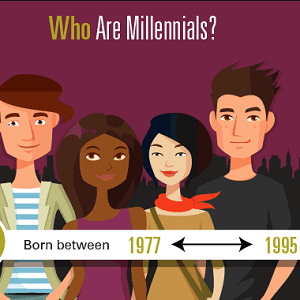
Millennial Giving
Who are “Millennials” and why are their giving habits so important?
Meet the Millennials: Generation “Avocado Toast”?

You may have heard of the Avocado Toast factor recently: a millionaire accused young folks today of frittering away their savings by buying overpriced things like smashed avocado on bread and saw that as proof of their lackadaisical attitude towards money management. Seriously.
But this millionaire is five years behind in his thinking when it comes to Millennials. According to the Case Foundation reports on Millennials, this generation of under 40’s are maturing into a massive portion of the global economy. By 2020, as the preceding generation starts to retire and the youngest Millennials graduate college, they will grow to 50% of the US workforce.

With numbers like these, is it any surprise that every company and every nonprofit wants – no, needs – to capture this corner of the market?
Yet somehow so many nonprofits are finding it difficult to get young people interested and then involved in their causes. Why is that?
Millennial Myths
Some myths persist: that Millennials don’t give; that they’re “slacktivists,” and only click Like buttons; or that they don’t care about anything that isn’t in an app.
The biggest myth is that Millennials don’t give at all. They may not give big gifts, but they do give smaller gifts more often. Older Millennials (30-40) give increasingly large gifts, as their careers stabilize and they grow their wealth.
According to the Case Foundation’s studies, Millennials have recently overtaken the Boomer generation in philanthropic action (even if not in the actual dollar amounts donated), giving more often and incorporating the causes they care about into their everyday behaviors and purchasing patterns.
While they may seem to be spending more on avocado toast and $5 cold brew coffee, Millennials are also spending more time volunteering for causes they care about, and more effort in advocating for those causes.
Even if they aren’t giving hundreds of thousands of dollars at a time, they give more regularly (and give on a recurring basis) to causes that are personal to them.
So what stops Millennials from giving?
The Case Foundation’s Millennial Impact Report is among several that demonstrate how young donors have a distinct set of priorities for charitable giving:
- Transparency
- Real-time feedback
- Measurable impact
Millennials don’t give to causes they don’t trust. They may hear about or want to know more about a cause that resonates with them on an emotional level. Yet commitment to giving money or time depends on whether an organization can prove or show a direct line between a donation and a real-world impact.
The nonprofits with the highest Millennial donor engagement are those that consistently and immediately respond to their donors with clear, measurable, personal reporting. Organizations like Charity: Water and New Story are good examples of this.
What’s clear is that engaging Millennials engages other generations, too. After all, who doesn’t prioritize trust and passion in their philanthropic efforts?
Who are the Millennials? How do they present themselves?
Generation Now
“Millennial” is like “Baby Boomers” or “Gen X” – a name assigned to the current crop of people under 40 and old enough to be in the workforce, who have certain technological or economic patterns and preferences.
Here are some things you should know:
Age Range
Depending on who you ask, they can be those born between 1977 and 1995. Some say they’re those who have “come of age” in the early 21st century.
Attitude
At the older end of the range of those labeled as Millennials, many take offense to being lumped in with “the kids”. Younger ones tend to embrace the name, and use it as a way to describe their behaviors. What is common among them is the pervasive use of technology in most aspects of life.
New Lifestyles
Millennials make up nearly 1/3 of the “Gig Economy”, either freelancing or as entrepreneurs. With more focus on careers, few are getting married, fewer still are buying homes; only 27% of younger millennials have any savings over $1,000. The difference in career structure and their youth means their giving portfolios are lower than older generations who have worked and saved longer.
New School
At least in the developed world, this generation is the most educated, with the highest number attending and graduating university than any before. That makes these savvy, credentialled under-40 folks hyper-aware and vocal about what they like. They also are quick to look things up online (on their phones, usually) if they don’t know the answer, or doubt what they’re hearing.
Online or Bust
However old they are, Millennials are those more comfortable with online communication and social media. The generations of Millennials are divided between those who remember dial-up internet and brick phones, and those who have grown up using apps on tablets.
In Part 2 of our 3-part series on Millennial philanthropy, we’ll explore our insights and see how this generation’s priorities are changing the way nonprofits approach fundraising.
Comments (3)
Part 2 Millennials | Perry Davis Associates
says March 21, 2018 at 11:46 am[…] NextPreviousBack to the Archive […]
Q2 2017 | Perry Davis Associates
says March 21, 2018 at 11:54 am[…] NextPreviousBack to the Archive […]
Part 3 Millennials – Perry Davis Associates
says January 16, 2020 at 2:43 pm[…] part 1 and part 2 of this special report on Millennial philanthropy, we looked more closely at who […]
Comments are closed.